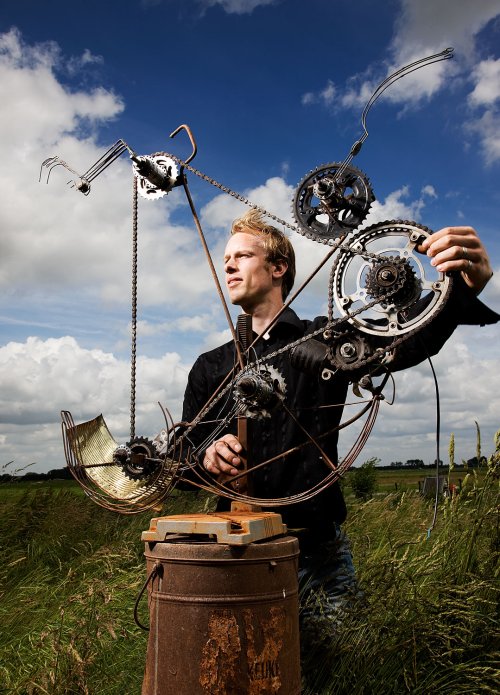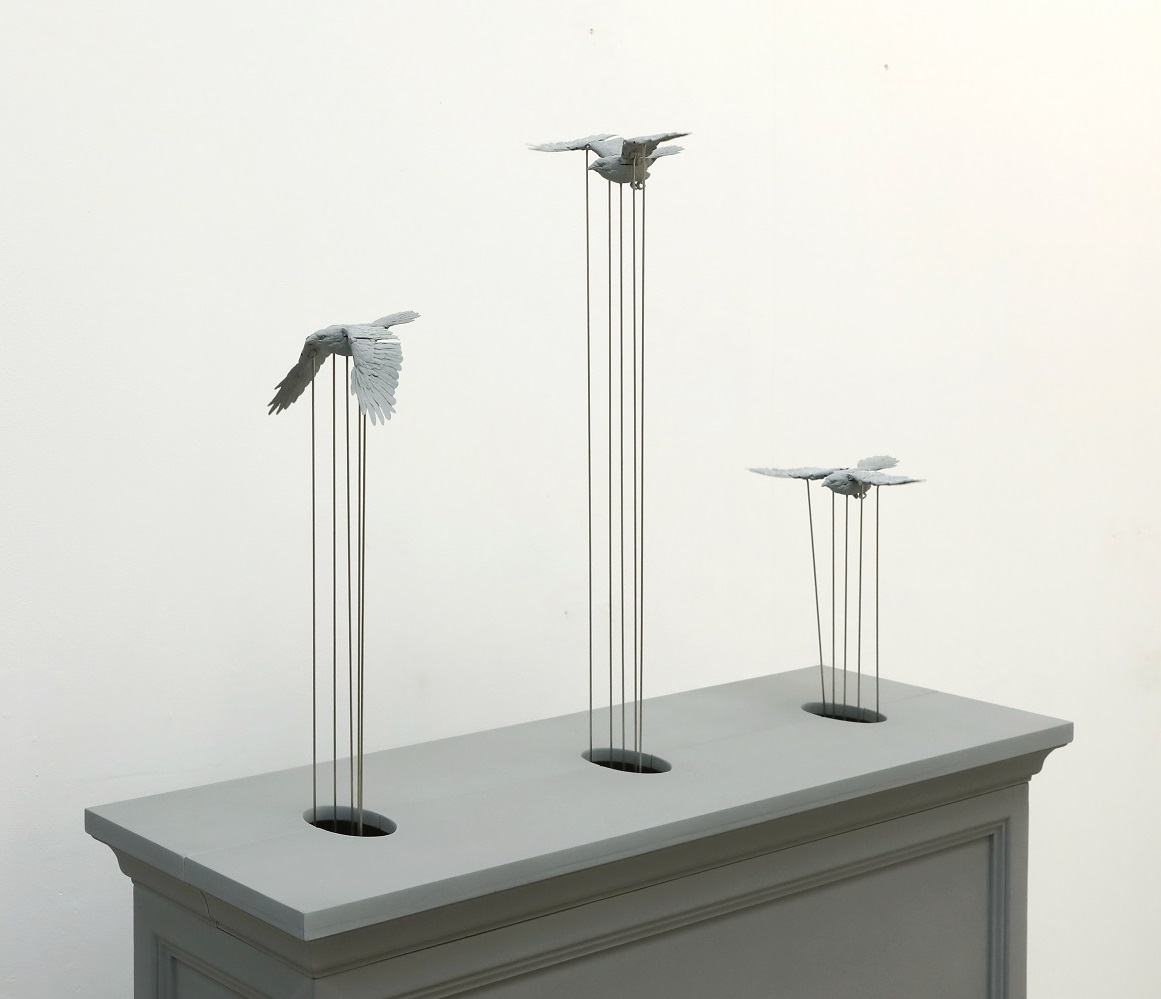Drie Vliegende Kraaien
Today an exhibition of the Brussels artist Hans op de Beeck was opened at the Templon Gallery in New York, showcasing the sculpture 'Crows' that I developed on his request. The little crows were designed by his studio and scaled to about a quarter of the size of a real crow and had to fly unequally behind each other, each at a different height.

I wanted the crows to fly as realistically as possible and designed a mechanism in which five vertical rods moving up and down both hold the crows in place and generate the flying motion of the wings. For that I studied how real crows fly, how their wings precisely move and how fast. With an extensive kinematic/geometric model I investigated all the lengths and distances between the joints for generating the best motion.
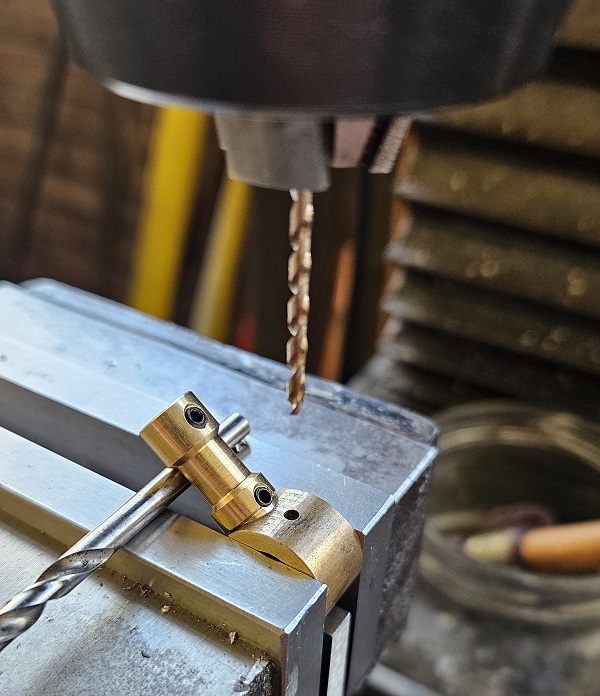
After the design phase I produced all the parts which required a high precision since deviations as small as 0.1 mm in distances would result in crows not flying at all. The first challenge was to make the crank mechanism for each crow. I made bronze rings as slider bearings with fixture for the vertical rods on top.
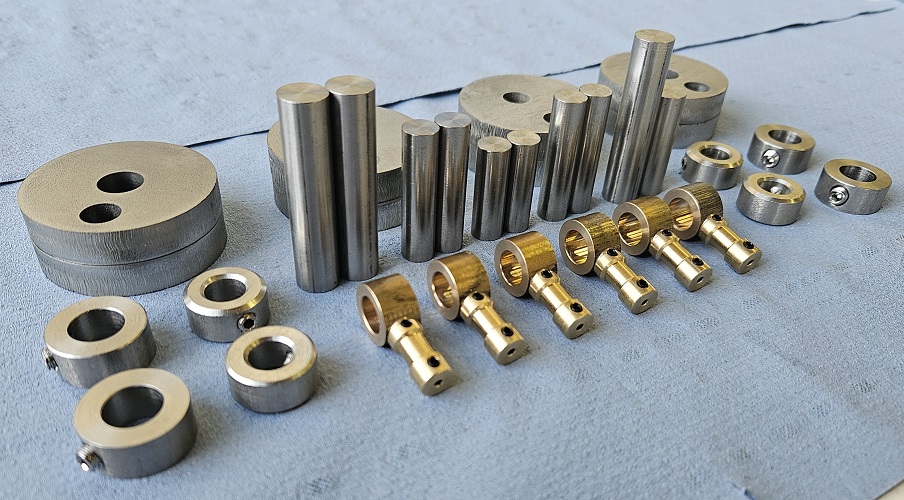
The cranks I made of stainless steel discs and axles that I glued and welded together. They are driven by belt drives which connect the three cranks together and have them move with a single motor.

As you can see from the crank, the central rod moves up and down while the outer rods move up and down as well but at a later moment, while the other two rods are fixed and steady.

The crows I divided in five segments that were 3D-printed with the joints for the axles of the wings integrated. Although the 3D print quality was excellent, still quite some handwork was needed to make the wings move smoothly and almost frictionless.
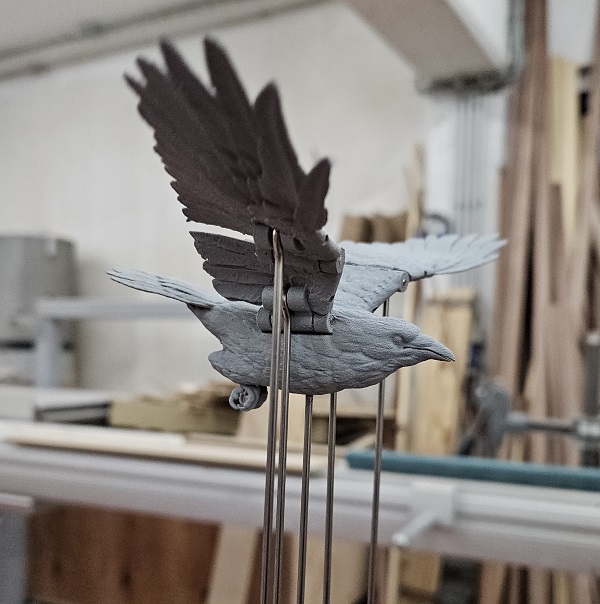
Back in the studio of Hans the birds were painted in his characteristic 'Op de Beeck-gray' color and placed in a stylish pedestal. Ready for transport to New York, its first exhibition.

